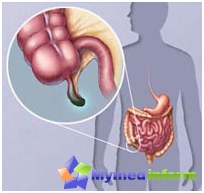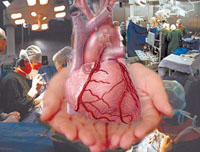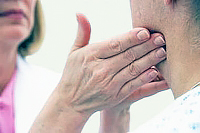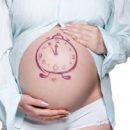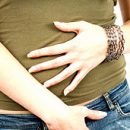In most children, the intestinal colic is functional and does not require the use of additional research methods. In this case, the diagnosis is made by a doctor visually. In the intestinal colic caused by various diseases, additional methods are needed to establish a diagnosis.
Content
The basic principles of the diagnosis of intestinal colic
The diagnosis of intestinal colic in most cases is very simple, the doctor practically visually determines the disease. Difficulties may occur only under Malabsorption syndrome and enterocolite, in this case the diagnostics include several stages, sometimes demanding the hospitalization of the child to the hospital.
The diagnosis begins with the poll of the parents, with the clarification of the four main issues:
- The age of the child in which a colic appeared for the first time
- What are the manifestations of colic, what is its frequency and duration
- What is the character of stool
- What is the weight gain
The seizures of intestinal colic, which began aged 3 weeks of life and manifest themselves with a shrill cry, bloating and the crude crustion, and the subsidiary of the main symptoms after the fattening of gases or feces, are functional. Chair, as a rule, is not changed, and the weight gain in body mass corresponds to the child's age. In this case, if the colic is not marked every day, and its duration does not exceed 4 hours, you can begin treatment without conducting an additional examination.
The intestinal colic is characterized by a long flow, the resumption of pain after gases and feces, changes in the child's chair (liquid, frequent or, on the contrary, rare, contains impurities or has a modified color or smell), a fierce or insufficient increase in body weight requires additional examination. An indication for conducting more clarifying diagnostics is the occurrence of colic at an earlier age or a child over 3-4 months of life. Additional examination includes the following research methods:
- Caprological Study Cala (2-3-fold)
- Determination of carbohydrate content in feces
- Sowing Kala on the intestinal and typhoid paratifous group of pathogens of intestinal infections
- sowing feces on dysbacteriosis
Data obtained as a result of the survey, with a lot of probability, assume Malabsorption syndrome, caused by lactase deficiency, food allergies, gluten intolerance, fibrosis, acute intestinal infections or dysbacteriosis, and so refute these assumptions and diagnose functional intestinal colic.
Diagnosis of intestinal colic with lactase insufficiency
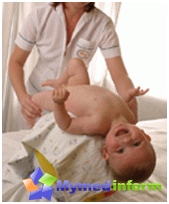 Increased carbohydrate content in Kale in 2-3 or more times compared with the norm and indication in history on poor tolerance of milk and dairy products in other family members may testify in favor of the diagnosis of lactase deficiency. It must be remembered that with the light, so-called erased, forms of this hereditary enzympathy (and they are most often found) the character of the chair does not change for a long time, and the weight gain remains satisfactory and almost the only manifestation of the disease is intestinal colic. Especially since the age of the child in which lactase deficiency is manifested, roughly corresponds to the age of children with functional intestinal colic. A more reliable diagnosis of lactase insufficiency is possible only in the conditions of specialized branches, since it requires lactose loading samples with the determination of the level of glucose and galactose in the child's blood.
Increased carbohydrate content in Kale in 2-3 or more times compared with the norm and indication in history on poor tolerance of milk and dairy products in other family members may testify in favor of the diagnosis of lactase deficiency. It must be remembered that with the light, so-called erased, forms of this hereditary enzympathy (and they are most often found) the character of the chair does not change for a long time, and the weight gain remains satisfactory and almost the only manifestation of the disease is intestinal colic. Especially since the age of the child in which lactase deficiency is manifested, roughly corresponds to the age of children with functional intestinal colic. A more reliable diagnosis of lactase insufficiency is possible only in the conditions of specialized branches, since it requires lactose loading samples with the determination of the level of glucose and galactose in the child's blood.
Intestinal colic associated with the intolerance to the proteins of cow's milk, appears after the introduction of dairy mixes. In a coprological study of feces, an admixture of a small amount of mucus, single uniform elements of blood (neutrophils, lymphocytes, eosinophils), a slight increase in fatty acids. Confirmation of the diagnosis is the detection of a high level of antibodies to proteins of cow's milk in the child's blood, which is proof of intolerance.
Diagnostics in gluten insufficiency
Gluten insufficiency (celiac disease), the fibrosis is manifested by the fact that the intestinal colic is evolving after the admission to the child's attitude, t.E. not earlier than 4-6 months of life. It is also characteristic of the appearance of a fat abundant and silent chair and a significant increase in the number of fatty acids and neutral fats in the coprogram. In this case, the child should be sent to an additional examination into a specialized department.
Diagnosis with enterocolites
Enterocolitis are often one of the causes of intestinal colic, caused by inflammatory lesion of the intestinal mucous membranes of a conditioned pathogenic microflora. Such a bowel defeat develops in children of the first weeks of life due to severe intestinal dysbiosis. More than this is preceded by the antibacterial therapy, partial or full parenteral nutrition, artificial feeding from the first week of life, long stay of the child in the hospital. Convals the development of such enterocolites transferred perinatal hypoxia and prematurity.
Typically enterocolites proceed in the form of sharp and chronic diargi. The chair is moderately rapidly, tightening, rarely - vomiting. Cal with admixture of mucus, greenery, lumps. Insufficient weight gain. Characterized pronounced symptoms of intestinal colic. In the coprogram there is a significant admixture of mucus, leukocytes, sometimes their accumulations, may be single erythrocytes, a moderate increase in the amount of fatty acids, neutral fats, starch. When studying the content of carbohydrates in feces, it is usually increased, but slightly. The study of biocenosis of feces (the so-called study on dysbacteriosis) and, if necessary, serological (immunological) studies in paired serums on antibodies to pathogens or determination of pathogens, including a polymerase-chain reaction, allows you to refine the diagnosis.



